Many common indoor plants can be dangerous for doodles. If your doodle accidentally ingests one of these plants, an emergency trip to the closest veterinarian is in order.Doodle owners need to be careful about what indoor plants grow in the home and outdoor plants that grow in the landscape.
If your Doodle ingest a poisonous plant, how can you tell whether you need to take them to the nearest veterinarian's office?
The best bet is to be better safe than sorry. If you notice your doodle vomiting or excessive drooling, or your doodle refuses to eat, go to the vet immediately.
If your doodle displays signs of skin irritation, such as blisters or rashes, your doodle might have accidentally brushed up against a toxic plant and developed a skin reaction.
If you have any questions about whether or not a plant could cause signs of poisoning in your pet, get in touch with your vet or the ASPCA Animal Poison Control Center.
You can reach the AAPC by calling (888) 426-4435.11
Safety First
Always keep a pet first aid kit on hand, whether you assemble it yourself (Pet Poison Helpline has a handy list) or buy a pre-made one.
On your fridge or somewhere convenient, keep a list of emergency phone numbers: your veterinarian’s phone number, the number of a local 24 hour emergency vet, the ASPCA Animal Poison Control Center (888) 426-4435, and the Pet Poison Helpline (855) 764-7661.
This blog is not to discourage you from growing houseplants but to increase your awareness of the popular houseplants toxic to doodles.
Doodles are curious, especially when young puppies. Extremely focused in its quest and if your doodle has a tendency to look for something to nibble on, then this list of poisonous plants for doodles will help you. When it comes to toxic items, doodles are generally smart enough not to go chewing on a poisonous thing. Avoid keeping the following plants in your house, backyard, front yard, and especially out of your doodle’s reach.
Here are some of the dangerous plants you should never have in your home if you have an indoor pet. The toxins these plants produce can lead to a wide range of problems, ranging from skin irritation to death.
If you already own one of these doodle-toxic plants, it’s best to give it away. If you just can’t part with your plant, place it somewhere where your doodle will never be able to reach it, such as a very high shelf or window sill.
Alocasia
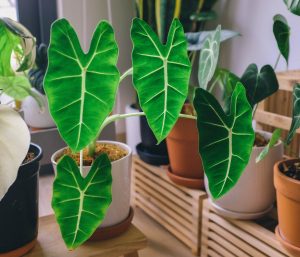
Araceae, iconsists of 79 species, originated from the area of the Eastern Himalayas, the tropical and subtropical regions of Asia, to tropical regions of the western Pacific and eastern Australia. They are also grown as a houseplant which contains insoluble calcium oxalate. The leaves, stems and roots are toxic. If your doodle eats this plant, they may demonstrate mucous membrane irritation, intense burning, and irritation of the mouth, lips, and tongue, excessive drooling, vomiting, difficulty in swallowing.
Aloe
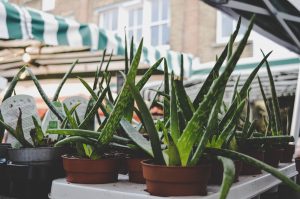
Some parts of the aloe plant are safe for dogs: the juice and gel found inside the leaves can be used as a topical treatment for skin abrasions, and dogs can safely drink aloe juice. Chewing on the plant can expose a dog to toxins called anthraquinone glycosides
Arrowhead Plant
Most common species is Syngonium podophyllum. It comes from the tropical areas of Central America and the Northern areas of South America. It is cultivated as an ornamental plant. The plant contains calcium oxalate in its sap, which is harmful if contacted or ingested.
The Doodle who eats this plant may display vomiting, depression, diarrhea, lack of appetite, chills, change in the color of urine.
Asparagus Fern
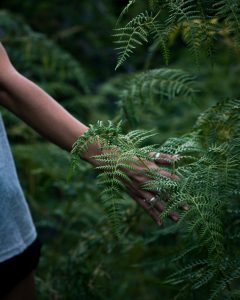
Asparagus fern carries a toxin. This poison can cause vomiting and diarrhea if ingested, along with skin irritation if your dog is exposed to it repeatedly.
Begonia
Begonia is one of the most attractive plants you can grow indoors. It is toxic for your doodle due to insoluble oxalates. If chewed, the whole plant can cause mucous membrane irritation, intense burning, and irritation of the mouth, lips, and tongue, excessive drooling, vomiting, difficulty in swallowing.
Caladium or Elephant Ear
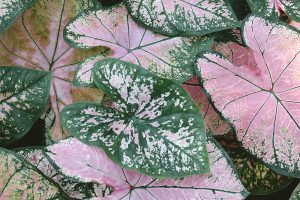
Caladium is a house plant poisonous to doodles if ingested. Like Dieffenbachia and Philodendron, Caladium contains sharp calcium oxalate crystals in its leaves that can irritate a dog’s mouth and cause severe swelling and burning of the mouth and tongue. Rarely, this irritation can lead to difficulty breathing and in severe cases, death.
Cactus

Cactus species are mainly grown as the ornamental houseplants. Most of the plants of this family are toxic and create a potential danger to house pets due to their thorns and spikes.Many species have different toxic substances. Spikes are the threat too.
Chinese Evergreen
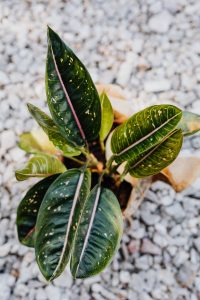
The Chinese evergreen (pictured in the back of the basket above) is hard on dogs who eat it. A relative of the Peace lily, Chinese evergreen also contains calcium oxalate crystals which can cause oral pain and swelling, vomiting, difficulty swallowing and breathing.
Dracaena Fragrans or "Corn Plant"
Vomiting—sometimes with blood—is the main symptom when the corn plant is ingested. It can lead to loss of appetite and depression. This reaction is caused by compounds called steroidal saponin, which are dangerous for your doodles.
Dieffenbachia

The dieffenbachia, also known as the “dumb cane plant,” can be poisonous to a dog. The leaves contain tiny, sharp calcium oxalate crystals which can irritate a dog’s mouth and cause severe swelling and burning of the mouth and tongue. It can cause swelling in a dog’s mouth, abdominal pain, and vomiting.
Rarely, this irritation can lead to difficulty breathing and in severe cases, death.
These tiny crystals can lead to big problems, so avoid bringing this plant into your home.
Dracaena
Dracaena is commonly grown as the houseplant.All parts of the plant contain saponins.If your doodle eats the dracaena, the symptoms displayed may be vomiting sometimes with blood, depression, drooling and lack of appetite.
Eucalyptus
If you are growing eucalyptus as a houseplant, it may trigger lethargy and irritate your dog. Even the smell of eucalyptus oil can trigger the bad mood of your doodle.Some of the symptoms are salivation, vomiting, diarrhea, depression and weakness.
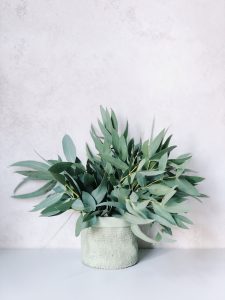
Ficus Benjamina
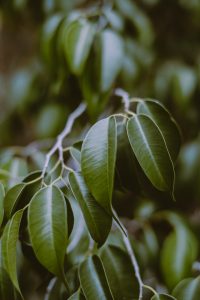
Also called weeping fig, it occurs naturally from Southern Asia to Northern Australia and the Solomon Islands. It is the official tree of Bangkok, Thailand.
All parts of the plant have proteolytic enzyme (ficin) and psoralen (ficusin). When doodles come in contact with the rubber tree plant, ficus elastica, it can cause inflammation of the skin, ingestion may irritate the mouth
Ivy
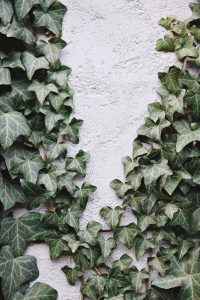
The English ivy contains polyacetylene and triterpenoid saponins. These compounds act as an irritant to the gastrointestinal system of dogs which cause excessive drooling, vomiting, diarrhea, and abdominal pain.
If your doodle eats ivy leaves, then smelly Doodle body fluids will soon be found all over the home .
Golden Pothos
Golden pothos (Epipremnum pinnatum) contains insoluble calcium oxalates that can cause mild clinical symptoms if chewed by your dog. The signs are mucous membrane irritation, intense burning, and irritation of the mouth, lips, and tongue, excessive drooling, difficulty in swallowing.
Jade Plant
Crassula ovata, commonly known as jade, is toxic to pets, although the toxic compounds are not well understood. Jade plants can cause vomiting and a slow heart rate in addition to a harder-to-identify symptom: depression.
Oleander
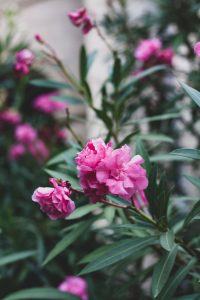
Oleander needs no introduction; it is a poisonous plant! Oleander is grown as a houseplant too. The whole plant is very dangerous, full of cardiac glycosides as digoxin. Its ingestion can cause colic, diarrhea (possibly bloody), sweating, difficulty with coordination, shortness of breath, difficulty in breathing, muscle tremors, and even death due to heart failure.
Peace Lily
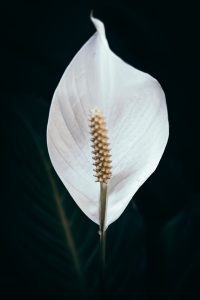
The Peace lily contains calcium oxalate crystals, which cause intense burning, and irritation of the mouth, lips, and tongue, excessive drooling, and difficulty swallowing. The whole plant is malicious.
Peyote (Lophophora Williamsii)
Popularly known as peyote from the regions of New Mexico and Texas this plant is poisonous for your doodle . It is a useful medicinal and ornamental plant for humans, but toxic for your doodle. The whole plant contains mescaline and other alkaloids. If eaten by your doodle, it may cause psychotropic, intoxication, vomiting and diarrhea.What an ugly and smelly mess!
Philodendron
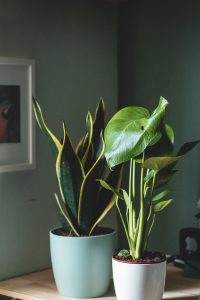
When it comes to easiest houseplants, philodendrons come to mind, but they are toxic to your Doodles. They contain calcium oxalate crystals, which trigger clinical problems after ingestion. All parts of the plant may cause mucous membrane irritation, intense burning, and irritation of the mouth and lips, tongue, excessive drooling, vomiting, difficulty in swallowing.
Epipremnum aureum, aka "pothos"
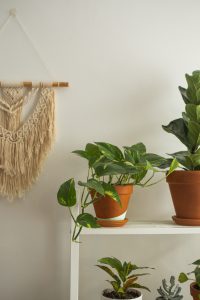
Like its close cousin philodendron, pothos is a hard-to-kill house plant with very few needs. Unfortunately, that means it can also cause the same symptoms as philodendron if ingested. Tiny, sharp calcium oxalate crystals contained in the leaves can irritate a dog’s mouth and cause severe swelling and burning of the mouth and tongue. Rarely, this irritation can lead to difficulty breathing and in severe cases, death.
Cycas Revoluta
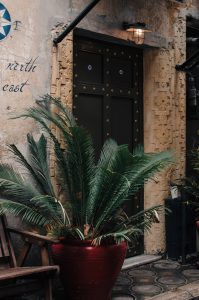
Sago palm from the seeds and the roots all the way to the leaves—is poisonous to doodles. This plant has such a bad toxic reputation. The toxin cycasin can cause vomiting, diarrhea, and in some cases, seizures, lethargy, and liver failure.The whole plant is toxic including causing bruising, increased thirst, hemorrhagic gastroenteritis, clotting disorder and death.
Schefflera

Another plant that belongs to Araceae family (Dieffenbachia, Calla lily, Arrowhead, Dumbcane, Peace Lily, Philodendron, Pothos, Umbrella Plant, Elephant’s Ear, Chinese Evergreen, and Schefflera), plants from this family contains calcium oxalate crystals. If your doodles chew this, it may cause injury. .All parts of the plant will cause mucous membrane irritation, intense burning, and irritation of the mouth, lips, and tongue, excessive drooling, vomiting, difficulty in swallowing. Doodles and Doodle parents be aware.
Ti Plant (Cordyline Terminalis)
This tropical houseplant is extremely low maintenance although it is toxic to doodles due to saponins. The whole plant can cause vomiting (sometimes with blood), depression, lack of appetite and drooling.
Zamioculcas Zamiifolia "ZZ Plant"
The ZZ plant can cause adverse reactions such as vomiting and diarrhea. Like Philodendron, ZZ plant contains calcium oxalate crystals that can cause irritation and swelling in the mouth and respiratory issues.
Plants Poisonous to Dogs: Looks Can Be Deceiving
Though it’s almost impossible to know every plant poisonous to your doodles, making yourself aware of some of the most common and dangerous toxic plants is a great start. Don’t be deceived by gorgeous blooms and houseplants. They can be some of the worst toxins!
Remember, check that your houseplants aren’t poisonous plants, and be vigilant about any flower arrangements brought into your home.
It’s also a great idea to keep this number handy: 24/7 ANIMAL POISON CONTROL CENTER: (855) 764-7661 and check this website for other items you can cross reference. https://www.rover.com/blog/poisonous-plants/ data base of poisonous plants
